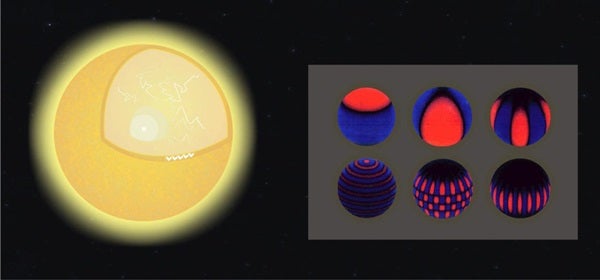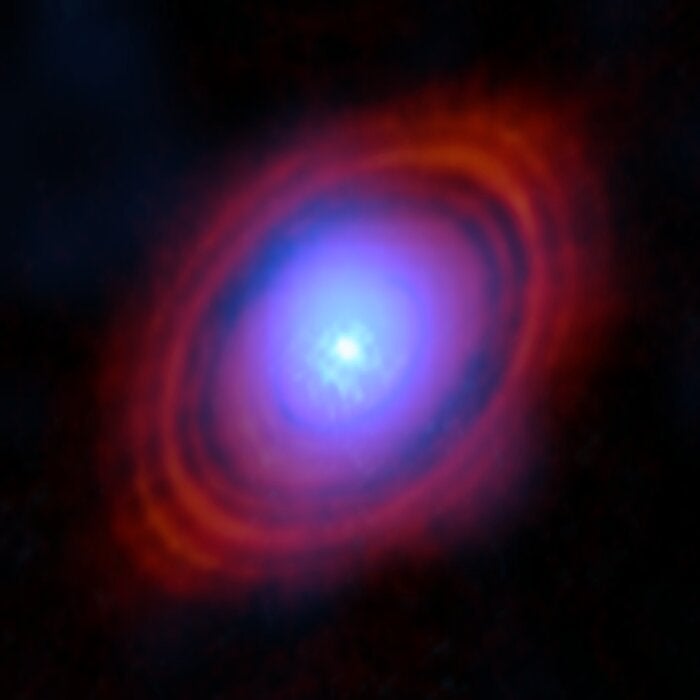“Thanks to asteroseismology, we know precisely the internal structure, mass, radius, rotation, and evolution of solar-type stars, but we had never been able to apply this tool efficiently to the study of hotter and more massive stars,” said Juan Carlos Suárez from IAA-CSIC.
In some sense, stellar seismology conceives of stars as resonating cavities where the movement of gas generates sound waves. Many of these sound waves tend to fade out, but if they find any mechanism to sustain them, they will reach an equilibrium on the surface of the star and deform it, producing different modes of oscillation, which can be observed as changes in temperature and glow.
As they go through different parts of the star, the modes of oscillation are affected and, depending on where they went, will take one form or another on the surface. “Some modes are more sensitive to what is happening inside, others to the size of the nucleus. All of them are influenced by chemical composition, internal structure, and age of the star. We use mathematical models to determine what type of structure and characteristics are behind the modes that are observed,” said Suárez.
A great leap forward for stellar physics
The study has centered on a type of star known as a Delta Scuti, whose mass ranges between 1.5 and 2.5 times that of the Sun and that rotates so fast that it can be deformed — instead of being spherical, it tends to flatten out. Due to its rapid rotation, its oscillation spectrum is difficult to interpret, and although regular patterns had been detected earlier, its physical properties were unknown.
However, recent results have revealed a relationship between certain oscillation patterns of Delta Scuti stars and their mean density very similar to that which exists in solar-type stars. “This work is an enormous leap forward insofar as it shows that we can know stars up to four times more massive than the Sun with the same level of precision as that of solar-type stars,” said Suárez.
To know the mean density of a star allows us not only to determine its mass and radius with precision, but also to grasp precisely what model will best yield other essential characteristics of the star, which in turn are indispensable to determine the mass, the radiu, or the age of extrasolar planets — planets that orbit around different stars than the Sun.
“Planets orbiting around stars, which are more massive than the Sun, are being discovered ever more frequently, and these new methods will make it possible to determine their characteristics,” said Suárez. “This adds value to the PLATO (ESA) mission, which will describe planetary systems and contribute precious information to understand their origin and evolution, which in turn is essential for the search of extraterrestrial life.”
These results were reached using a tool named TOUCAN, an asteroseismology model management tool developed by researchers from the Institute of Astrophysics of Andalusia and the Spanish Virtual Observatory (CAB-INTA-CSIC). TOUCAN makes it possible to compare millions of models and to carry out statistical studies of different parameters, with the advantage that it is part of the Virtual Observatory, so that all the models are homogenized.









